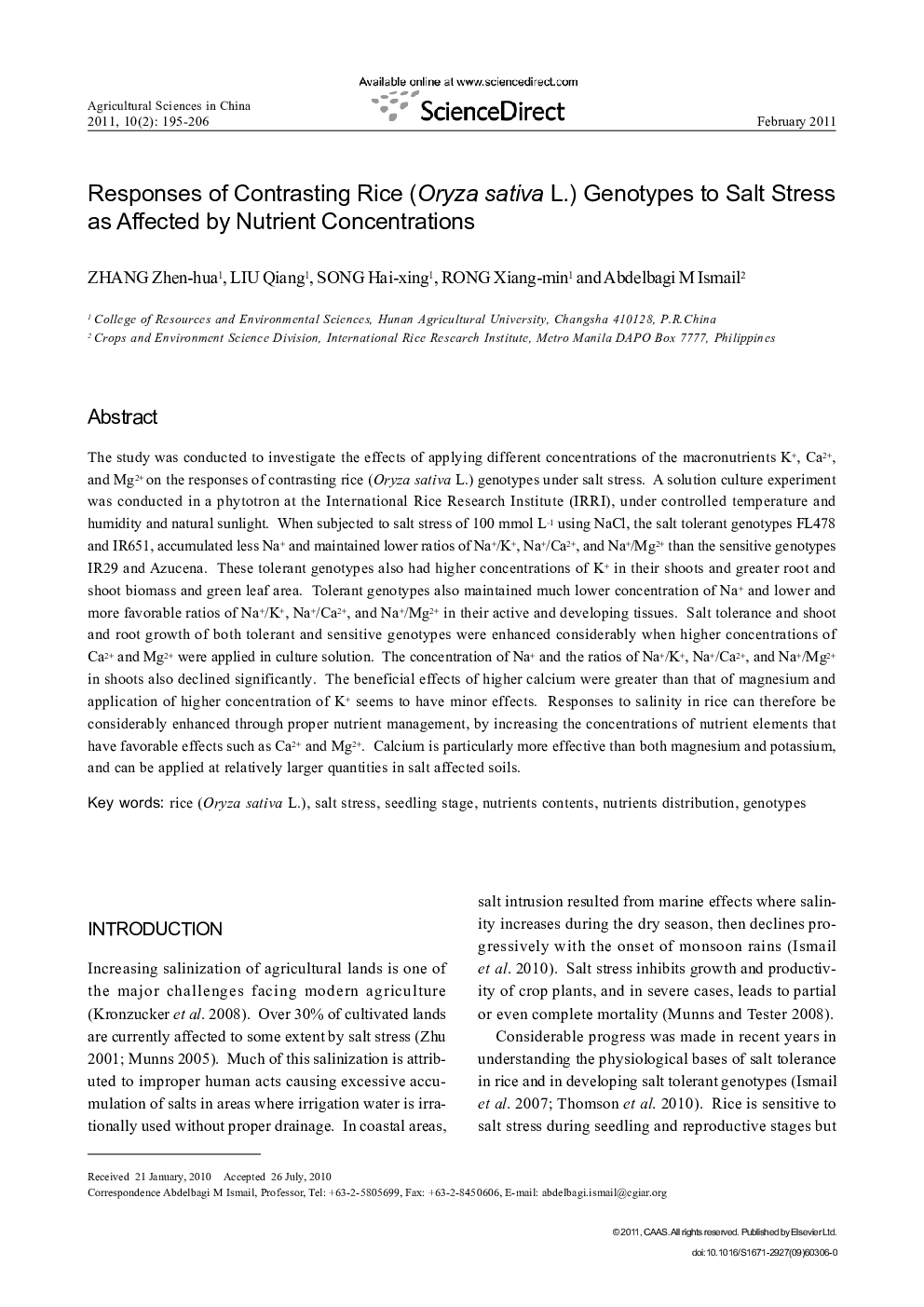| کد مقاله | کد نشریه | سال انتشار | مقاله انگلیسی | نسخه تمام متن |
|---|---|---|---|---|
| 4489900 | 1317743 | 2011 | 12 صفحه PDF | دانلود رایگان |

The study was conducted to investigate the effects of applying different concentrations of the macronutrients K+, Ca2+, and Mg2+ on the responses of contrasting rice (Oryza sativa L.) genotypes under salt stress. A solution culture experiment was conducted in a phytotron at the International Rice Research Institute (IRRI), under controlled temperature and humidity and natural sunlight. When subjected to salt stress of 100 mmol L-1 using NaCl, the salt tolerant genotypes FL478 and IR651, accumulated less Na+ and maintained lower ratios of Na+/K+, Na+/Ca2+, and Na+/Mg2+ than the sensitive genotypes IR29 and Azucena. These tolerant genotypes also had higher concentrations of K+ in their shoots and greater root and shoot biomass and green leaf area. Tolerant genotypes also maintained much lower concentration of Na+ and lower and more favorable ratios of Na+/K+, Na+/Ca2+, and Na+/Mg2+ in their active and developing tissues. Salt tolerance and shoot and root growth of both tolerant and sensitive genotypes were enhanced considerably when higher concentrations of Ca2+ and Mg2+ were applied in culture solution. The concentration of Na+ and the ratios of Na+/K+, Na+/Ca2+, and Na+/Mg2+ in shoots also declined significantly. The beneficial effects of higher calcium were greater than that of magnesium and application of higher concentration of K+ seems to have minor effects. Responses to salinity in rice can therefore be considerably enhanced through proper nutrient management, by increasing the concentrations of nutrient elements that have favorable effects such as Ca2+ and Mg2+. Calcium is particularly more effective than both magnesium and potassium, and can be applied at relatively larger quantities in salt affected soils.
Journal: Agricultural Sciences in China - Volume 10, Issue 2, February 2011, Pages 195-206